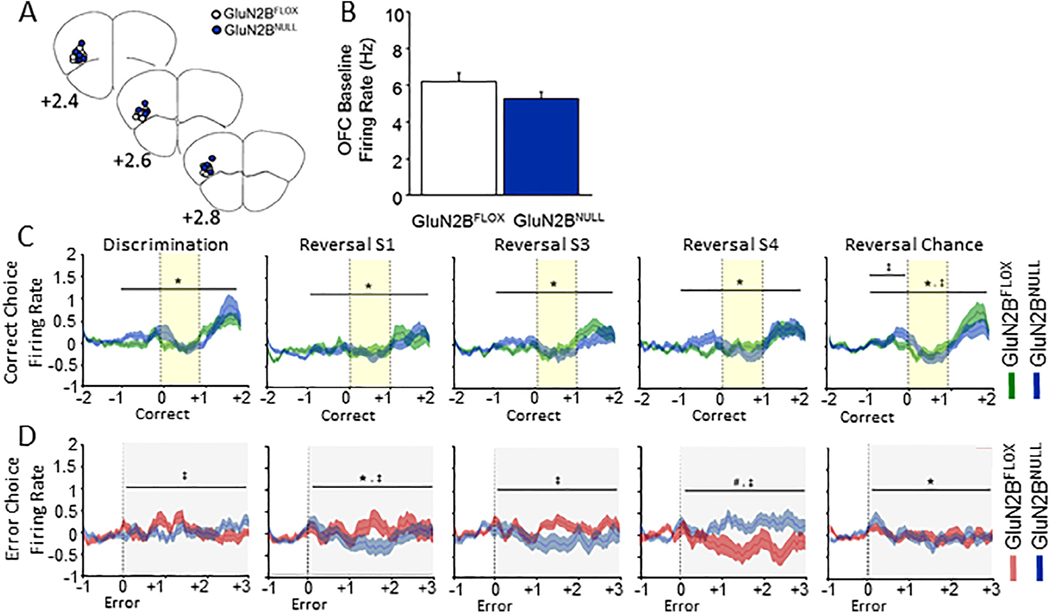Fig. 4.
Loss of GluN2B alters OFC firing patterns after error choice. (A) Electrode placement in OFC for GluN2BNULL and GluN2BFLOX controls. (B) Baseline firing rate of OFC neurons did not differ across genotypes. (C) OFC neurons increased firing following a correct choice in both genotypes. Firing decreased from discrimination to early reversal before slowly recovering back to discrimination levels. GluN2BNULL had slightly reduced firing prior to correct choice and during reward approach during chance reversal. (D) GluN2BFLOX mice showed an increase in firing following an error choice that increased during early reversal sessions 1 and 3. GluN2BNULL mice had significantly decreased error firing during discrimination and reversal session 1 and 3 before significantly increasing during reversal session 4. Firing following an error response significantly increased immediately following the choice during chance reversal but did not differ by genotype. Data are means ± SEM. N = 8 mice per genotype/recording session. Yellow band indicates reward cue (tone) and gray band error cue (house light). * = p < .01 main effect of time # = p < .01 main effect of genotype ‡ = p < .01 genotype × time interaction.

